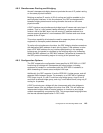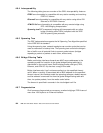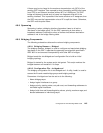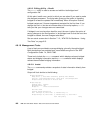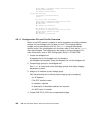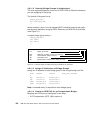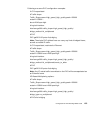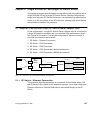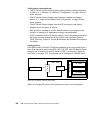Configuration of IP-Forwarding Media Cards 151
• VC-Based Multiplexing (RFC 1483, section 5)
When LLC Encapsulation is used, a single PVC is configured to carry
all
bridged traffic. The same PVC can also carry nonbridged traffic such as
routed IP datagrams.
When VC-Based Multiplexing is used, multiple PVCs are defined for the
logical interface. Each PVC carries a
specific
type of traffic. For example, one
PVC carries Ethernet while another carries FDDI.
Configuration in gratm.conf
The next three steps describe ATM bridging configuration requirements and
options. Examples of configured PVCs follow.
1. In the Traffic Shaping section of the /etc/gratm.conf file, set traffic shaping
name and quality of service (qos) parameters. Choose a name of your
choice for each type of service that will be assigned:
# Traffic shaping parameters
# Lines beginning with the keyword "Traffic_Shape" define
# traffic shapes which may be used to configure the performance
# characteristics of ATM Virtual Circuits.
#
Traffic_Shape name=myown_high_speed_high_quality \
peak=155000 sustain=155000 burst=2048 qos=high
2. To configure a logical interface for bridging, you create an Interface entry
in the Interface section of the /etc/gratm.conf file. This entry must include
the intended bridging method. Specify it with the bridge_method=
keyword.
Here is a sample Interface entry:
Interface ga030 traffic_shape=myown_high_speed_high_quality \
bridge_method=vc_multiplexed
There are two types of bridging methods to specify:
• VC-Based Multiplexing, bridge_method=vc_multiplexed
The configuration must include one or more PVCs for this interface
specified in the PVC section and defined with proto=vcmux_bridge.
• LLC Encapsulation, bridge_method=llc_encapsulated
The configuration must include one PVC for this interface specified in
the PVC section and defined with proto=llc,bridging. Media and
transmission restrictions can also be specified with this keyword.
3. One or more PVCs must be defined in the PVC section for each logical
interface specified for bridging in the Interface section.



